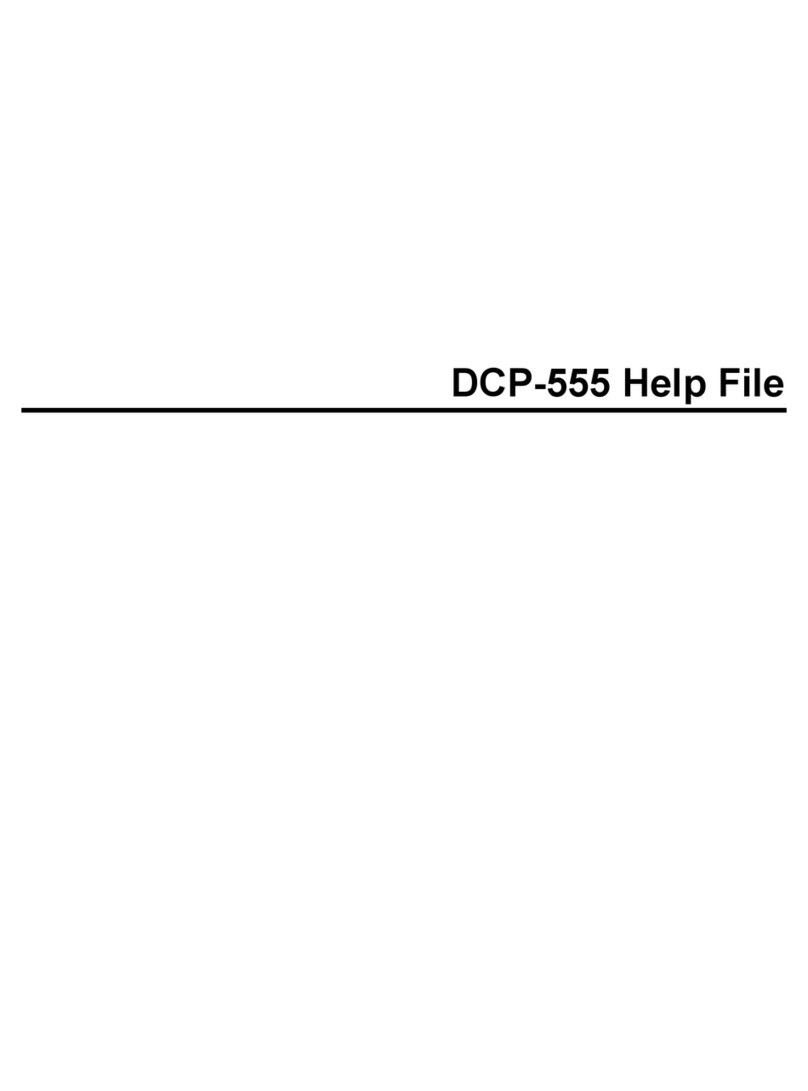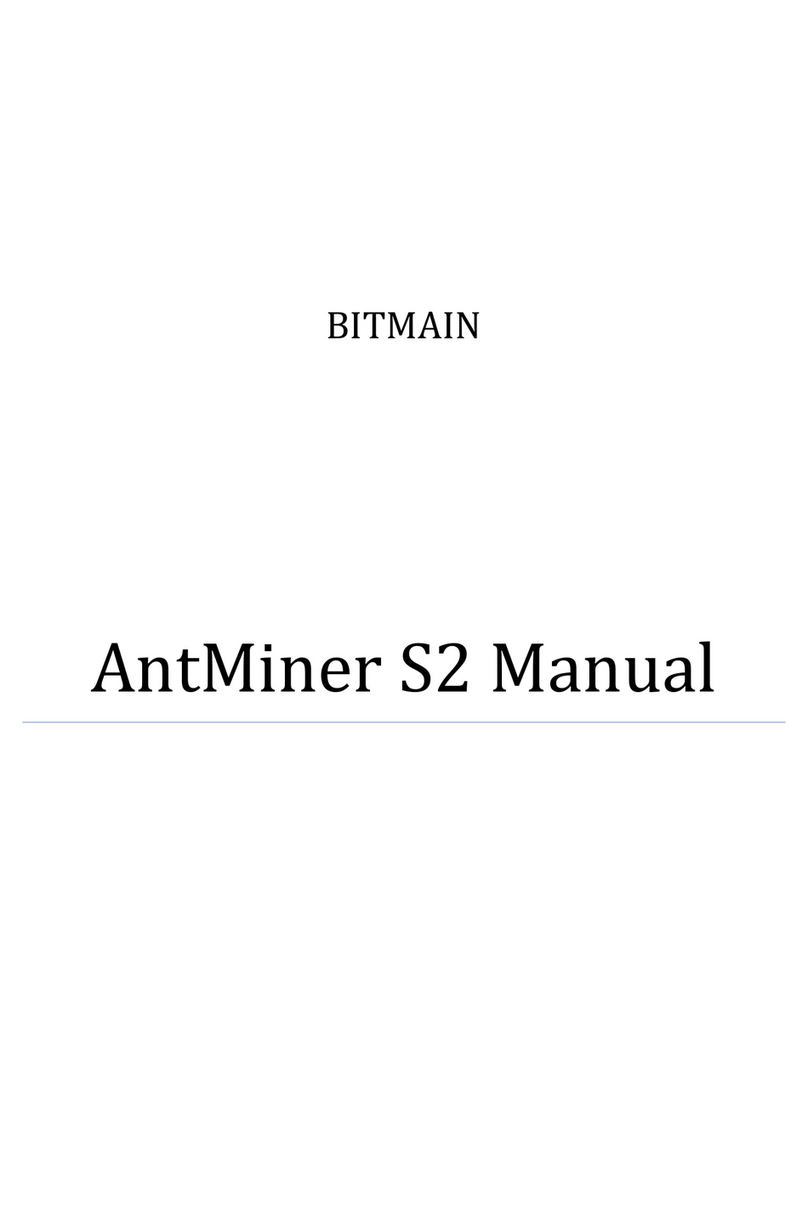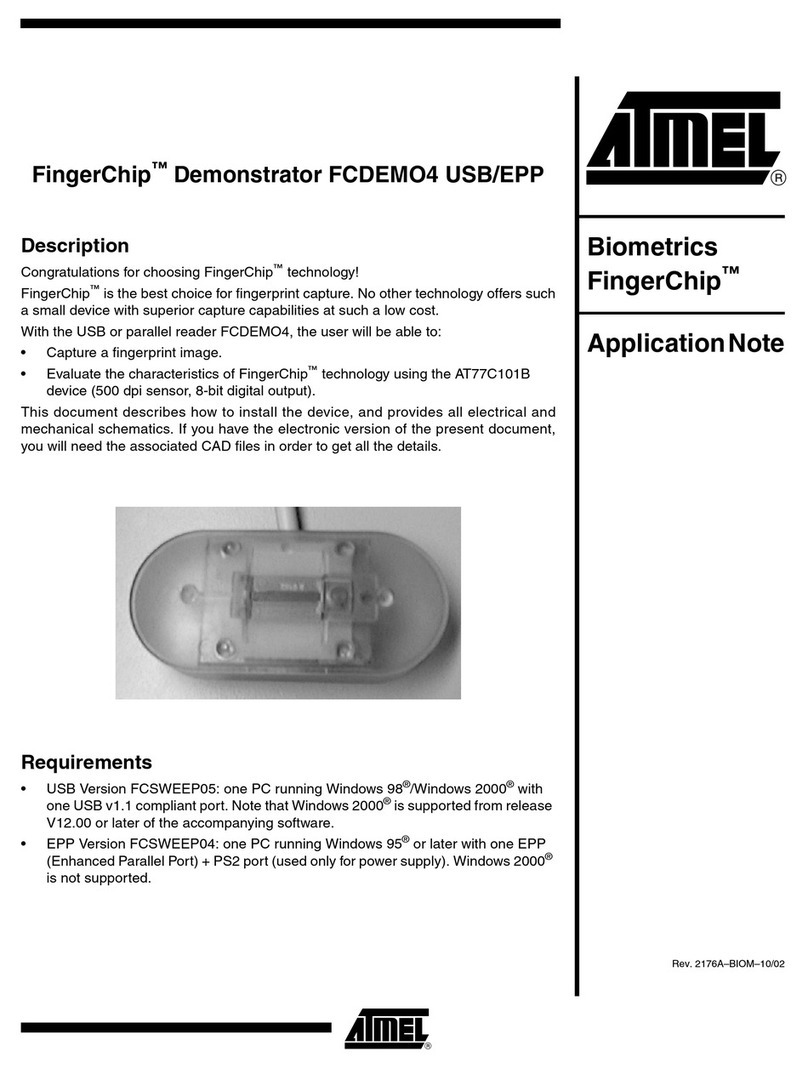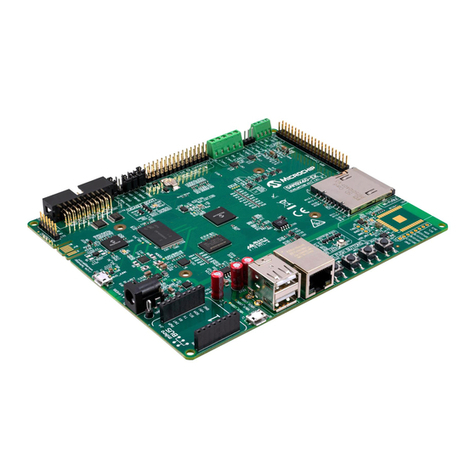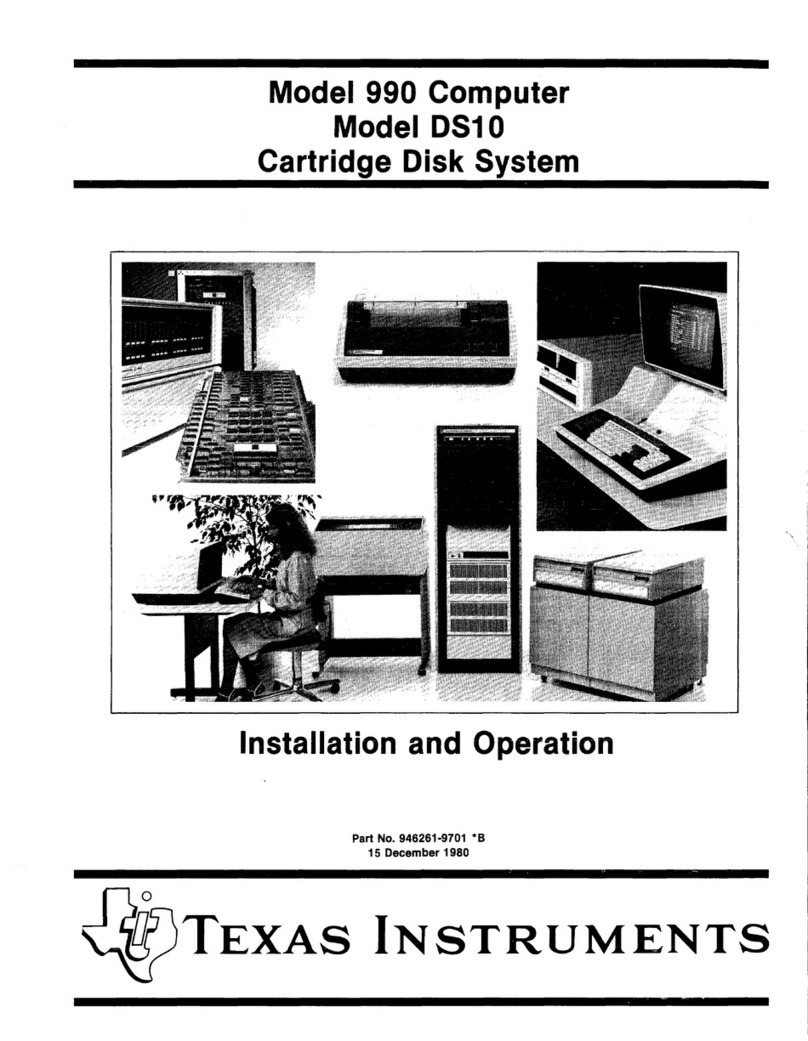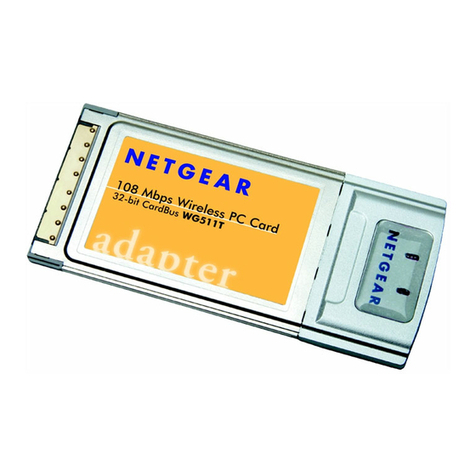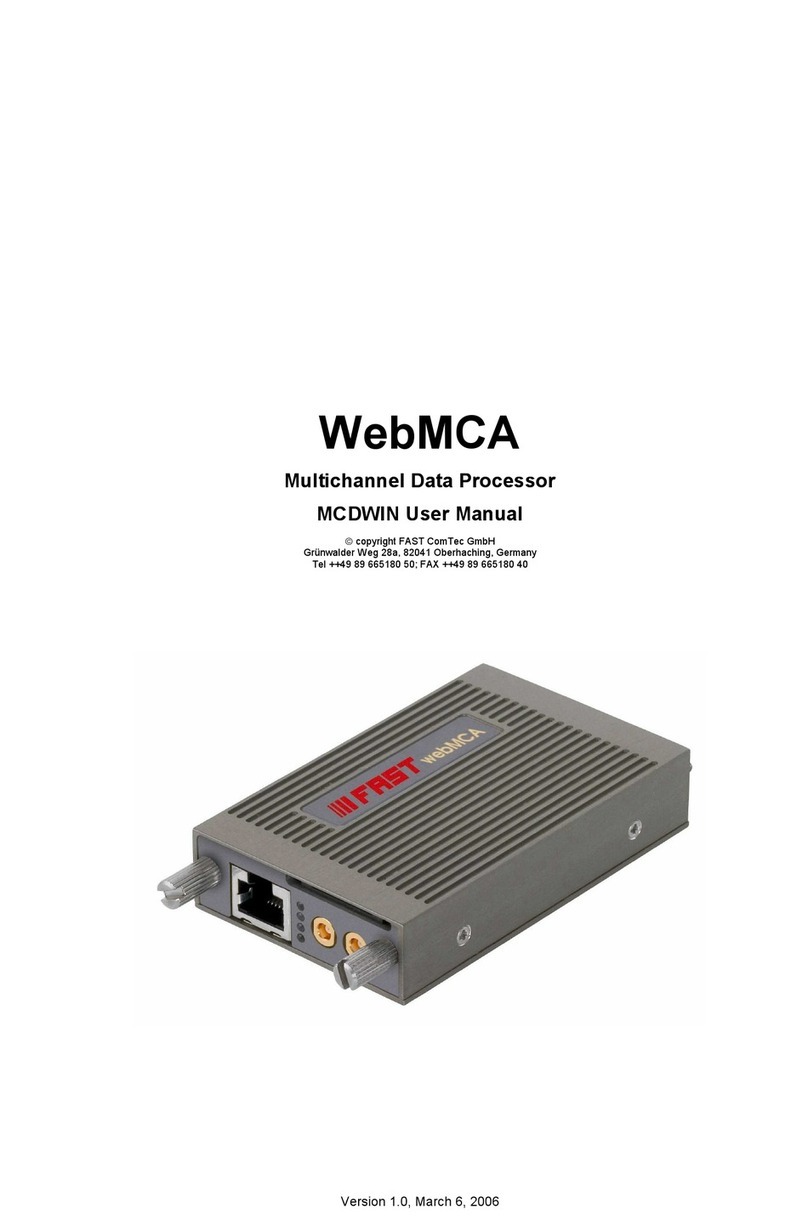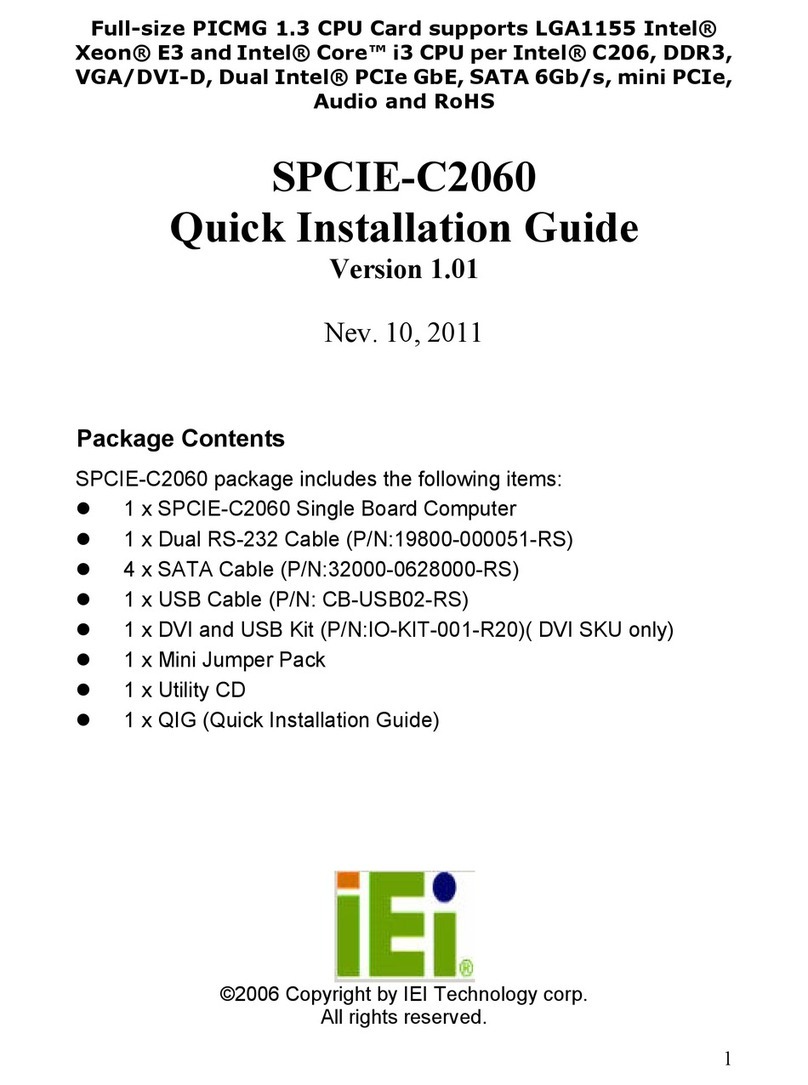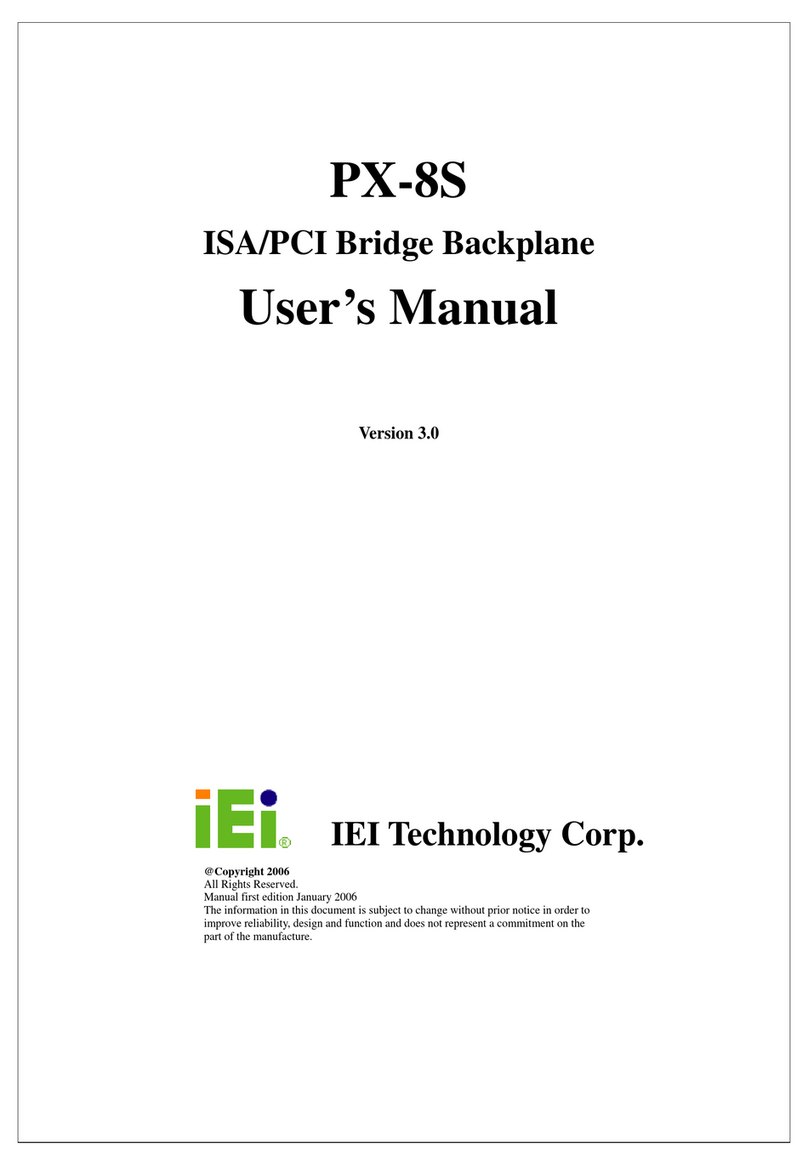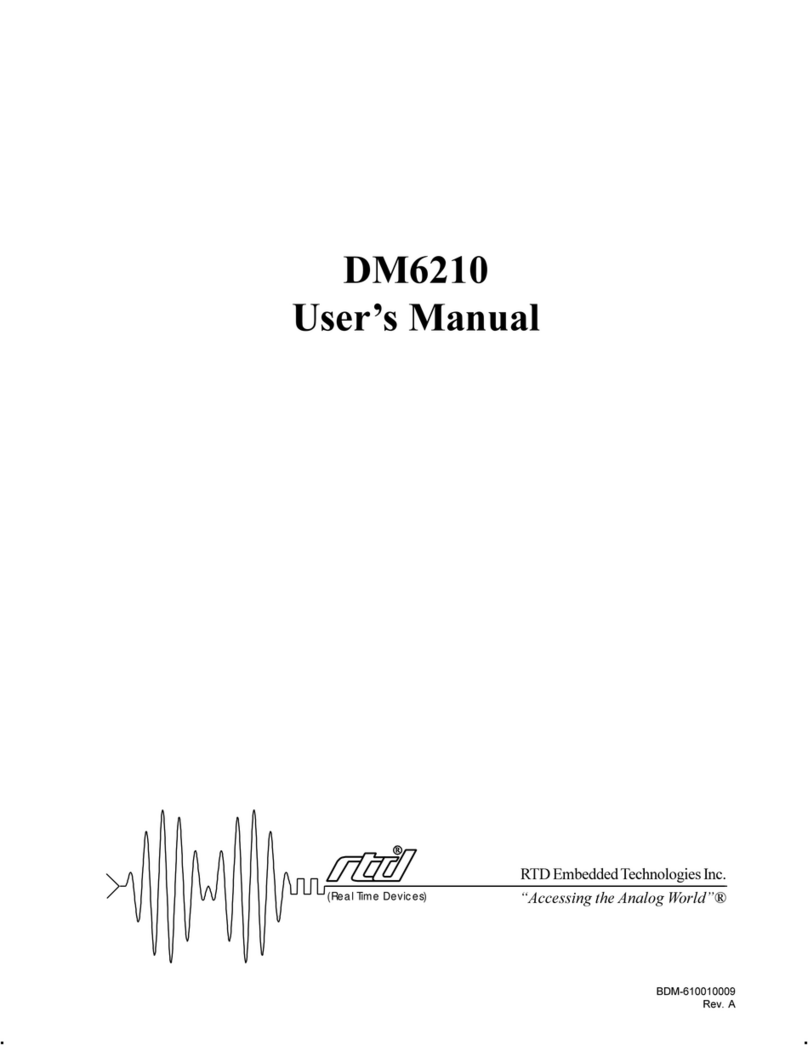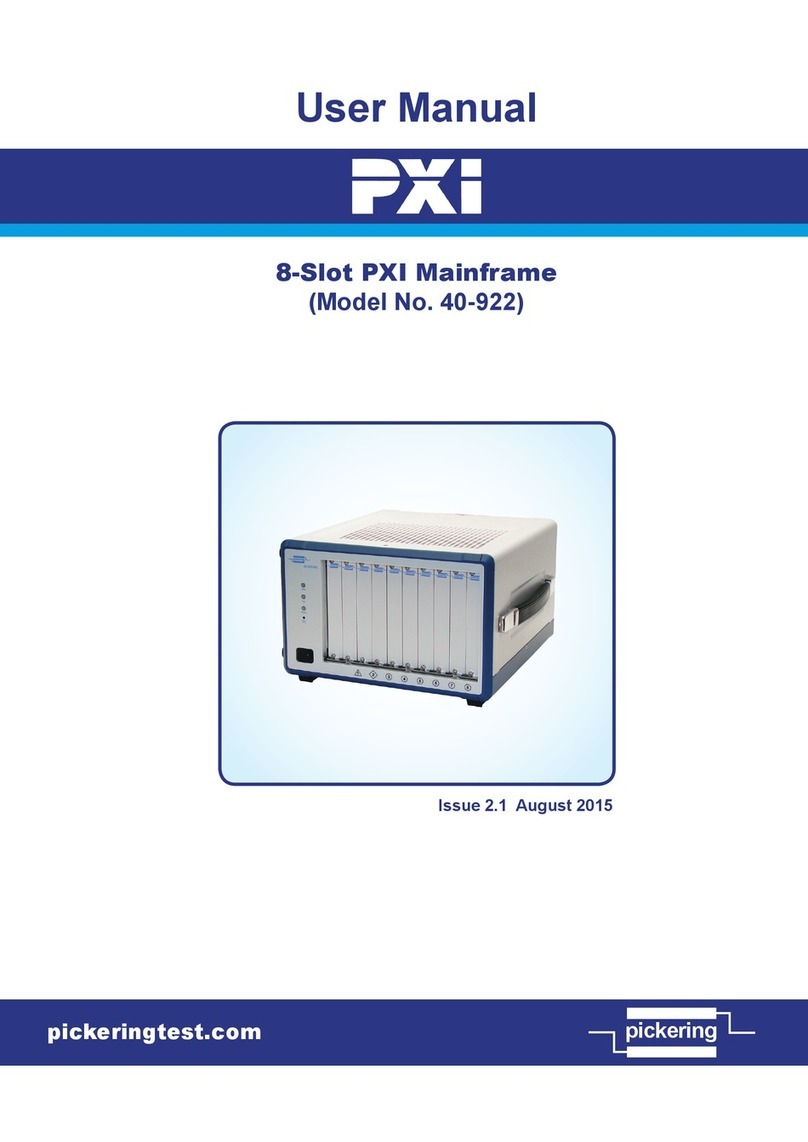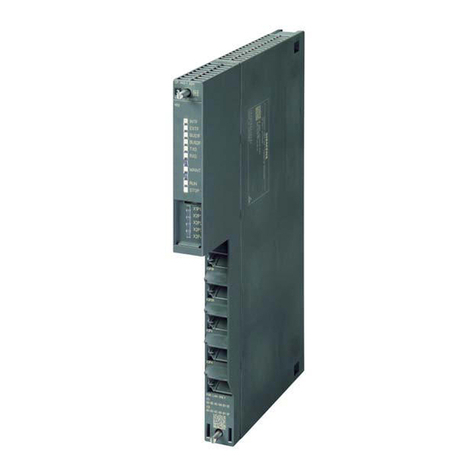Giddings & Lewis MMC-A2 User manual

Giddings & Lewis
Controls, Measurement and Sensing
MMCTM
Hardware Manual
Part Number M.1300.7165
Version 12.0

Beldenis a registered trademark of Cooper Industries, Inc.
IBM is a registered trademark of International Business Machines Corp.
Windows 95, 98, NT, Microsoft, and MS-DOS are registered trademarks of Microsoft Corporation.
MOD HUB is a trademark of Contmporary Control Systems, Inc.
ARCNETis a registered trademark of Datapoint Corporation.
ST is a trademark of AT&T Bell Labs.
Temposonicsis a trademark of Contemporary Control Systems, Inc.
DeviceNetis a trademark of Open DeviceNetVendor Association. Inc.
Pentium and PentiumPro are trademarks of Intel Corporation.
PiC900, PiCPro, MMC, PiCServoPro, PiCTune, PiCProfile, LDO Merge, PiCMicroTerm and PiC Programming Pendant are
trademarks of Giddings & Lewis, LLC.
NOTE
Progress is an on-going commitment at Giddings & Lewis. We continually strive to offer the most
advanced products in the industry; therefore, information in this document is subject to change without
notice. The illustrations and specifications are not binding in detail. Giddings & Lewis shall not be
liable for any technical or editorial omissions occurring in this document, nor for any consequential or
incidental damages resulting from the use of this document.
DO NOT ATTEMPT to use any Giddings & Lewis product until the use of such product is completely
understood. It is the responsibility of the user to make certain proper operation practices are
understood. Giddings & Lewis products should be used only by qualified personnel and for the
express purpose for which said products were designed.
Should information not covered in this document be required, contact the Customer Service
Department, Giddings & Lewis, 660 South Military Road, P.O. Box 1658, Fond du Lac, WI 54936-
1658. Giddings & Lewis can be reached by telephone at (920) 921–7100.
M.1300.7165
Release 0201
© 1999, 2000, 2001 Giddings & Lewis, LLC

GIDDINGS & LEWIS MMC Hardware Manual TOC-1
Table of Contents: MMC Hardware Manual
1 Safety Precautions ............................................................................................. 5
1.1 System Safety ............................................................................................ 5
1.1.1 User Responsibility........................................................................... 5
1.1.2 Safety Instructions ............................................................................ 5
1.2 Safety Signs ............................................................................................... 6
1.3 Warning Labels .......................................................................................... 7
1.4 Safety First ................................................................................................. 8
1.5 Safety Inspection ........................................................................................ 8
1.5.1 Before Starting Operations ............................................................... 8
1.6 After Shutdown .......................................................................................... 8
1.7 Operating Safely ........................................................................................ 8
1.8 Electrical Service & Maintenance Safety .................................................. 9
1.9 Safe Cleaning Practices ............................................................................. 10
2 Introduction ....................................................................................................... 11
2.1 Overview .................................................................................................... 11
2.2 Major Components .................................................................................... 11
2.2.1 Machine Control Board .................................................................... 13
2.2.2 Motion Control Board ...................................................................... 13
2.2.2.1 Analog Servo board ........................................................... 13
2.2.2.2 SERCOS board .................................................................. 14
2.2.3 Option Modules ................................................................................ 15
3 Mounting the MMC Control ........................................................................... 17
4 Adding an Option Module to the MMC Control ........................................... 19
5 Dimensions and Mounting of MMC with Option Module Attached ........... 21
6 System Power and Environment Requirements ............................................ 23
6.1 General Power and Environment Requirements ........................................ 23
6.2 Control Cabinet Specifications .................................................................. 23
6.3 Power Distribution Diagram ...................................................................... 24
6.4 Notes for 24V Power Supply and MMC .................................................. 25
6.5 Grounding the System ............................................................................... 28
6.6 Controlling Heat Within the System .......................................................... 29
6.7 Handling an MMC ..................................................................................... 30
7 System Wiring Guidelines ................................................................................ 31
7.1 Recommended Signal Separation .............................................................. 31
7.2 Differential Devices for Analog and Encoder Signals ............................... 33
8 Starting an Operation ....................................................................................... 35
8.1 Connecting the MMC to the Application .................................................. 35
8.2 Troubleshooting ......................................................................................... 36
8.3 Diagnostics ................................................................................................. 37
8.3.1 Power-On Diagnostics ...................................................................... 37

TOC-2 MMC Hardware Manual GIDDINGS & LEWIS
8.3.1.1 Power LED ........................................................................ 37
8.3.1.2 Scan LED ........................................................................... 37
8.3.1.3 Diagnostic LEDs ................................................................ 37
8.3.2 Run-Time Diagnostics...................................................................... 38
9 MMC Connections to External Devices for Machine Control ..................... 39
9.1 PiCPro Port ................................................................................................ 39
9.2 Block I/O Port ............................................................................................ 40
9.3 User Port .................................................................................................... 41
9.4 General I/O Port ......................................................................................... 42
9.5 Power Connection ...................................................................................... 45
10 MMC Analog Servo Connections for Motion Control .................................. 47
10.1 Axis Connectors ......................................................................................... 47
10.2 Auxiliary I/O Connector ............................................................................ 52
11 MMC SERCOS Connections for Motion Control ......................................... 57
11.1 SERCOS Receive and Transmit Ports ....................................................... 57
11.2 Serial (Loader) Port ................................................................................... 58
12 Basic MMC Theory of Operation .................................................................... 59
12.1 Machine Control Board Operation ............................................................ 59
12.2 LEDs .......................................................................................................... 60
12.3 Diagnostic Error Codes .............................................................................. 61
12.4 MMC Machine Control ............................................................................ 62
12.5 Application in Flash ................................................................................... 62
12.6 General I/O Output Operation ................................................................... 63
12.7 Protecting from an Inductive Load ............................................................ 63
12.8 DC Output Theory of Operation (Axis Connector) ................................... 64
12.9 DC Input Operation (Axis, AUX, General Connectors) ............................ 65
13 Analog Servo Control Operation ..................................................................... 67
13.1 Analog Output Theory of Operation (Axis Connectors) ........................... 68
13.2 Encoder Theory of Operation (Axis and AUX Connectors) ..................... 68
13.3 Analog Input Operation (AUX Connector) ............................................... 70
14 MMC SERCOS Control Operation ................................................................ 71
15 Replacing the MMC Battery ............................................................................ 73
16 Specifications .................................................................................................... 75
A.1 - MMC Ethernet TCP/IP Module ............................................................ A.1-1
1 Introduction ................................................................................................ A.1-1
2 Connections ............................................................................................... A.1-2
2.1 The Ethernet Port.............................................................................. A.1-4
2.2 The RS232 COMM Ports ................................................................. A.1-4
3 LEDs .......................................................................................................... A.1-5
4 Firmware Update ....................................................................................... A.1-5
5 Theory of operation ................................................................................... A.1-6
6 Specifications Table ................................................................................... A.1-7
7 Useful Internet Links ................................................................................. A.1-8

GIDDINGS & LEWIS MMC Hardware Manual TOC-3
B.1 - MMC DeviceNet Module ......................................................................... B.1-1
1 Introduction ................................................................................................ B.1-1
2 Connections ............................................................................................... B.1-2
2.1 The DeviceNet Port .......................................................................... B.1-3
2.2 The Configuration (RS232) Port ...................................................... B.1-3
3 LEDs .......................................................................................................... B.1-4
4 Theory of Operation ................................................................................... B.1-5
5 Specifications ............................................................................................. B.1-6
C.1 - Breakout Boxes, Centurion Connector Cables and Flying Lead Cables C.1-1
1 Breakout Boxes and Cables ....................................................................... C.1-3
1.1 Breakout Box and Cables for Axis Connector ................................. C.1-3
1.1.1 Breakout Box for Axis Connector ..................................... C.1-4
1.1.2 Cable - Breakout Box to MMC Axis Connector ............... C.1-5
1.2 Breakout Box and Cables for Auxiliary I/O Connector ................... C.1-6
1.2.1 Breakout Box for AUX I/O Connector .............................. C.1-6
1.2.2 Auxiliary I/O Connector Breakout Box with Encoder Isolators C.1-9
1.2.3 Cable - Breakout Box to AUX I/O Connector ................... C.1-12
1.3 Breakout Box and Cables for Block I/O Connector ......................... C.1-15
1.3.1 Block I/O Connector Breakout Box ................................... C.1-15
1.3.2 Cable - Breakout Box to Block I/O Connector .................. C.1-17
1.4 Breakout Box and Cables for User Port Connector......................... C.1-18
1.4.1 User Port Connector Breakout Box ................................... C.1-18
1.4.2 Cable - Breakout Box to USER PORT Connector ............ C.1-20
1.5 Breakout Box and Cables for General I/O Connector ...................... C.1-21
1.5.1 Breakout Box for GEN I/O Connector .............................. C.1-21
1.5.2 Cable - GEN I/O Connector to Breakout Box ................... C.1-23
2 Cables from Centurion Drives to MMC Axis Connector .......................... C.1-25
2.1 Cable - DSM J1 Connector to MMC Axis Connector...................... C.1-25
2.2 Cable - MicroDSM J1 to MMC Axis Connector ............................. C.1-27
3 Flying Lead Cables to MMC Control ........................................................ C.1-29
3.1 Flying Lead Cable to MMC Axis Connector ................................... C.1-29
3.2 Flying Lead Cable to MMC AUX I/O Connector............................ C.1-30
3.3 Flying Lead Cable to MMC BLK I/O Connector............................. C.1-33
3.4 Flying Lead Cable to MMC USER PORT Connector ..................... C.1-34
3.5 Flying Lead Cable to MMC GEN I/O Connector ............................ C.1-35
D.1 - MMC Profibus
Module ............................................................................ D.1-1
1 Introduction ................................................................................................ D.1-1
2 Connections ............................................................................................... D.1-2
2.1 The Profibus Port.............................................................................. D.1-3
2.2 The Configuration (RS232) Port ...................................................... D.1-3
3 LEDs .......................................................................................................... D.1-4
4 Theory of Operation ................................................................................... D.1-5
5 Specifications ............................................................................................. D.1-6

TOC-4 MMC Hardware Manual GIDDINGS & LEWIS
E.1 - CE and EMC Guidelines ......................................................................... E.1-1
1 Background on EMC (Electromagnetic Compatibility) Compliance ........ E.1-1
2 Background on Low Voltage Compliance ................................................. E.1-1
3 RFI Emission and Immunity ...................................................................... E.1-2
4 Classes of EMC Operating Environments ................................................. E.1-3
5 Conformance with the EMC Directive ...................................................... E.1-4
6 Conformance With the Low Voltage Directive ......................................... E.1-4
7 Changes to the PiC Products ...................................................................... E.1-4
7.1 Changes Affecting the User.............................................................. E.1-5
8 Using EMC and Non-EMC Modules ......................................................... E.1-8
9 Declarations of Conformity ....................................................................... E.1-9
Index ............................................................................................................ IND-1

Safety Precautions
GIDDINGS & LEWIS MMC Hardware Manual 5
1 Safety Precautions
READ AND UNDERSTAND THIS SECTION IN ITS ENTIRETY
BEFORE UNDERTAKING INSTALLATION OR
ADJUSTMENT OF MMC CONTROL EQUIPMENT
The advice contained in this section will help users to operate and maintain the
equipment in a safe manner at all times.
PLEASE REMEMBER THAT SAFETY IS EVERYONE'S RESPONSIBILITY
1.1 System Safety
The basic rules of safety set forth in this section are intended as a guide for
the safe operation of equipment. This general safety information, along with
explicit service, maintenance and operational materials, make up the
complete instruction set. All personnel who operate, service or are involved
with this equipment in any way should become totally familiar with this
information prior to operating.
1.1.1 User Responsibility
It is the responsibility of the user to ensure that the procedures set
forth here are followed and, should any major deviation or change
in use from the original specifications be required, appropriate
procedures should be established for the continued safe operation
of the system. It is strongly recommended that you contact your
OEM to ensure that the system can be safely converted for its new
use and continue to operate in a safe manner.
1.1.2 Safety Instructions
1. Do not operate your equipment with safety devices bypassed
or doors removed.
2. Only qualified personnel should operate the equipment.
3. Never perform service or maintenance while automatic con-
trol sequences are in operation.
4. To avoid shock or serious injury, only qualified personnel
should perform maintenance on the system.

Safety Precautions
6 MMC Hardware Manual GIDDINGS & LEWIS
5. ATTENTION - DANGER TO LIFE
Do not touch the main power supply fuses or any components
internal to the power modules while the main power supply
switch is ON. Note that when the main power switch is OFF,
the incoming supply cable may be live.
6. GROUNDING (Protective Earth)
The equipment must be grounded (connected to the protective
earth connection) according to OEM recommendations and to
the latest local regulations for electrical safety. The ground-
ing (protective earth) conductor must not be interrupted inside
or outside the equipment enclosures. The wire used for equip-
ment grounding (connection to protective earth) should be
green with a yellow stripe.
7. If there is any doubt at all as to the safety of the equipment,
you should set the main power switch to OFF and contact
your OEM for advice.
1.2 Safety Signs
The purpose of a system of safety signs is to draw attention to objects and
situations which could affect personal or plant safety. It should be noted that
the use of safety signs does not replace the need for appropriate accident
prevention measures. Always read and follow the instructions based upon
the level of hazard or potential danger.

Safety Precautions
GIDDINGS & LEWIS MMC Hardware Manual 7
1.3 Warning Labels
Hazard warning
When you see this safety sign on a system, it gives a warning of a hazard or
possibility of a hazard existing. The type of warning is given by the pictorial
representation on the sign plus text if used.
The safety color is black on a yellow background with a black symbol. To
ignore such a caution could lead to severe injury or death arising from an
unsafe practice. If voltage levels are included in the text they must indicate
the maximum level of the hazard in normal or fault condition.
Danger, Warning, or Caution warning
Hot Surface warning
Danger Electric
Shock Risk
Symbol plus DANGER, WARNING or CAUTION: Thes
e
notices provide information intended to prevent potential
personal injury and equipment damage.
Hot Surface

Safety Precautions
8 MMC Hardware Manual GIDDINGS & LEWIS
1.4 Safety First
Giddings & Lewis equipment is designed and manufactured with
consideration and care to generally accepted safety standards. However, the
proper and safe performance of the equipment depends upon the use of sound
and prudent operating, maintenance and servicing procedures by trained
personnel under adequate supervision.
For your protection, and the protection of others, learn and always follow
these safety rules. Observe warnings on machines and act accordingly.
Form safe working habits by reading the rules and abiding by them. Keep
these safety rules handy and review them from time to time to refresh your
understanding of them.
1.5 Safety Inspection
1.5.1 Before Starting Operations
1. Ensure that all guards and safety devices are installed and
operative and all doors which carry warning labels are closed
and locked.
2. Ensure that all personnel are clear of those areas indicated as
potentially hazardous.
3. Remove (from the operating zone) any materials, tools or
other objects that could cause injury to personnel or damage
the system.
4. Make sure that the control system is in an operational condi-
tion.
5. Make certain that all indicating lights, horns, pressure gauges
or other safety devices or indicators are in working order.
1.6 After Shutdown
Make certain all controlled equipment in the plant is safe and the associated
electrical, pneumatic or hydraulic power is turned off. It is permissible for
the control equipment contained in enclosures to remain energized provided
this does not conflict with the safety instructions found in this section.
1.7 Operating Safely
1. Do not operate the control system until you read and understand the
operating instructions and become thoroughly familiar with the system
and the controls.
2. Never operate the control system while a safety device or guard is
removed or disconnected

Safety Precautions
GIDDINGS & LEWIS MMC Hardware Manual 9
3. Where access to the control system is permitted for manual operation,
only those doors which provide that access should be unlocked. They
should be locked immediately after the particular operation is com-
pleted.
4. Never remove warnings that are displayed on the equipment. Torn or
worn labels should be replaced.
5. Do not start the control system until all personnel in the area have been
warned.
6. Never sit or stand on anything that might cause you to fall onto the con-
trol equipment or its peripheral equipment.
7. Horseplay around the control system and its associated equipment is
dangerous and should be prohibited.
8. Know the emergency stop procedure for the system.
9. For maximum protection when carrying out major servicing requiring
the system to be powered down, the power source should be locked
using a lock for which only you have the key. This prevents anyone
from accidentally turning on the power while you are servicing the
equipment.
10. Never operate the equipment outside specification limits.
11. Keep alert and observe indicator lights, system messages and warnings
that are displayed on the system.
12. Do not operate faulty or damaged equipment. Make certain proper ser-
vice and maintenance procedures have been performed.
1.8 Electrical Service & Maintenance Safety
1. ALL ELECTRICAL OR ELECTRONIC MAINTENANCE AND
SERVICE SHOULD BE PERFORMED BY TRAINED AND
AUTHORIZED PERSONNEL ONLY.
2. It should be assumed at all times that the POWER is ON and all condi-
tions treated as live. This practice assures a cautious approach which
may prevent accident or injury.
3. To remove power:
LOCK THE MAIN SWITCH IN THE OPEN POSITION.
USE A LOCK TO WHICH ONLY YOU HAVE THE KEY.
4. Make sure the circuit is safe by using the proper test equipment. Check
test equipment regularly
5. Capacitors take time to discharge. Care should be taken in manual dis-
charging of capacitors

Safety Precautions
10 MMC Hardware Manual GIDDINGS & LEWIS
6. There may be circumstances where troubleshooting on live equipment
is required. Under such conditions, special precautions must be taken:
•Make sure your tools and body are clear of the areas of equipment
which may be live.
•Extra safety measures should be taken in damp areas.
•Be alert and avoid any outside distractions.
•Make certain another qualified person is in attendance.
7. Before applying power to any equipment, make certain that all per-
sonnel are clear of associated equipment.
8. Control panel doors should be unlocked only when checking out elec-
trical equipment or wiring. On completion, close and lock panel
doors.
9. All covers on junction panels should be fastened closed before leav-
ing any job.
10. Never operate any controls while others are performing maintenance
on the system.
11. Do not bypass a safety device.
12. Always use the proper tool for the job.
13. Replace the main supply fuses only when electrical power is OFF
(locked out).
1.9 Safe Cleaning Practices
1. Do not use toxic or flammable solvents to clean control system
hardware.
2. Turn off electrical power (lock out) before cleaning control system
assemblies.
3. Keep electrical panel covers closed and power off when cleaning an
enclosure.
4. Always clean up spills around the equipment immediately after they
occur.
5. Never attempt to clean a control system while it is operating.
6. Never use water to clean control equipment unless you are certain that
the equipment has been certified as sealed against water ingress. Water
is a very good conductor of electricity and the single largest cause of
death by electrocution.

Introduction
GIDDINGS & LEWIS MMC Hardware Manual 11
2 Introduction
This document contains information for the MMC hardware. Block I/O information
can be found in the PiC900 Hardware Manual. Software information can be found in
the PiCPro Software Manual, the Function/Function Block Reference Guide, ASFB
Manuals or on-line.
2.1 Overview
The MMC Control offers a complete solution to both machine and motion
control in a stand-alone unit. The MMC family includes these models:
•MMC-A2 (2 1/2 axis analog servo control)
•MMC-A4 (4 1/2 axis analog servo control)
•MMC-S8 (8 axis SERCOS control)
The PiCPro for Windows programming tool used with the PiC family of
controls is also used to program the MMC. The built-in I/O [28 inputs (24
VDC) and 16 outputs (24 VDC)] can be expanded using Giddings & Lewis
serially distributed block I/O. There are also eight (four) low current DC and
four (two) DC inputs on the Axis connectors of the MMC-A4 and MMC-A2.
Field-installable options for the MMC include an Ethernet TCP/IP interface
and a DeviceNet™ master interface.
2.2 Major Components
The major components of an MMC Control include a Machine Control board
and a Motion Control board contained within a metal enclosure.
Related external connections for the boards are located on the face of the
enclosure.
Add-on communications modules are also available to connect to the MMC
Control.

Introduction
12 MMC Hardware Manual GIDDINGS & LEWIS
Figure 1: The MMC Control Units
PicPro Port
Block I/O
User Port
General I/O
Power
Axis 4 Port
Axis 3 Port
Axis 2 Port
Axis 1 Port
Auxiliary
LEDs
I/O Port
Analog Motion
MMC-A4 (or MMC-A2) Servo Control MMC SERCOS Control
(One-Ring Port)
Port
Port
Connection
PicPro
Block I/O
User
General I/O
Power
LEDs
Control Side
Port
Port
Port
Connection
Port
RECV
XMIT
LOADER
Machine Control
Side
(Common to all
MMC Controls)
SERCOS Motion
Control Side
Machine Control
Side
(Common to all
MMC Controls)

Introduction
GIDDINGS & LEWIS MMC Hardware Manual 13
2.2.1 Machine Control Board
A Machine Control Board and it’s related external connections are
located on the right side of the control. The Machine Control Board
contains the CPU. Ladder logic programming is used for machine
control. This board also provides the PiCPro serial interface port,
block I/O interface port, user serial interface port and a general I/O
port consisting of 16 DC outputs and 16 DC inputs
2.2.2 Motion Control Board
A Motion Control Board and it’s related external connections are
located on the left side of the control. The motion control side of the
MMC unit can be either an Analog Servo board or a SERCOS
board.
2.2.2.1 Analog Servo board
The Analog Servo board provides conventional analog/
digital interfacing for two or four drives.
The typical signals needed to interface to an anlaog
drive are provided by the analog servo module. The
drive command is in the form of an analog voltage
(±10V). Feedback is accepted from quadrature type
encoders with RS422 style differential outputs. Digital
I/O (+24 VDC) is used for drive signals enable, reset,
and fault.
The analog servo board is offered in both 2 1/2 and 4 1/2
axis configurations. An axis is considered to be an
analog output with a corresponding encoder input. In
each configuration shown in the following table, note
that there is an extra encoder input. This is referred to as
a half axis.
Available I/O 2 1/2 Axis 4 1/2 Axis
GEN I/O Port DC Inputs 16 16
GEN I/O Port DC Outputs 16 16

Introduction
14 MMC Hardware Manual GIDDINGS & LEWIS
2.2.2.2 SERCOS board
The SERCOS Motion Control board provides a fiber
optic input and output for one SERCOS ring. There is
also a serial port for field upgrades of the board
processor’s FLASH memory.
Available I/O 2 1/2 Axis 4 1/2 Axis
Analog Inputs 1 1
Analog Outputs 2 4
Encoder Inputs 3 5
Axis DC Inputs 2 4
Axis DC
Outputs
48
Axis Fast DC
Inputs
35
AUX I/O Port
DC Inputs
612

Introduction
GIDDINGS & LEWIS MMC Hardware Manual 15
2.2.3 Option Modules
Optional communications modules provide special functions such
as an Ethernet or DeviceNet interface. Figure 2 depicts an option
module connected to an MMC Control.
Figure 2: Option Module Connected to MMC Control
MMC
Module
Option
Module

Introduction
16 MMC Hardware Manual GIDDINGS & LEWIS
NOTES

Mounting the MMC Control
GIDDINGS & LEWIS MMC Hardware Manual 17
3 Mounting the MMC Control
Mount the unit to your cabinet using the mounting slots on the MMC. The MMC unit
may be mounted vertically or horizontally. The recommended size of mounting
hardware is #10 bolts with #10 star washers (to ensure proper ground connection) as
shown in Figure 3
Figure 3: MMC Mounting Dimensions
MMC
.527" (13.39 mm)
1.00"
(25.4 mm)
2.09" (53.09 mm)
9.59" (243.59 mm)
8.75" (222.25 mm)
.218" (5.54 mm)
1.06" (26.9 mm)
.
56" (14.22 mm)
Side Cover
Screw Head
.040" Thickness
.080" Thickness
NOTE: Add the side
cover and screw head
thicknesses to the
unit’s dimensions for
total width.

Mounting the MMC Control
18 MMC Hardware Manual GIDDINGS & LEWIS
NOTES
This manual suits for next models
2
Table of contents
